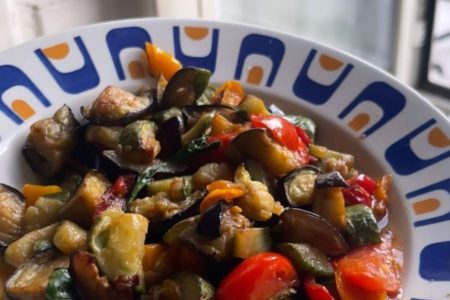Table of Contents
Naples is undoubtedly the undisputed queen of street food, or street food. Between portfolio pizzas, fried pizzas, crocchè and fried fish cuoppi, walking around the city empty-handed is really a shame!
One of the most popular specialties sold on the street is the so-called octopus broth, which has a long history behind it and has been one of the most popular poor recipes on the tables of Neapolitans for centuries. Today such a dish has become more of a holiday food, especially for Epiphany. In the past, however, it was a widely consumed dish as octopus was a cheap fish and very easy to catch in the Gulf.
Its abundance, in fact, allowed poorer families to feed themselves with little. Hot and very tasty, octopus broth consisted of a simple cup of water in which the octopus had been boiled with salt and pepper. Broth sellers used to roam all along the historic center of Naples, especially in the area between Porta Capuana and Pignasecca. Today there are very few left in the city who continue undeterred to sell this delicacy.
A tradition of centuries-old history
The earliest records of the archaic Neapolitan food date all the way back to Boccaccio, who mentions it in a private letter of 1339. Later it was also discussed by Matilde Serao, who describes its convivial atmosphere in her work The Belly of Naples. For centuries, octopus broth has
was consumed on the street at the many stalls that offered it hot in glasses or cups.
You might be interested
Private Neapolitan cooking lesson with a Local: choose what to cook, prepare and enjoy dinner
per person Book
Cooking Class dedicated to pasta in Salerno
per person Book
This is because the broth served to warm up on cold winter days and to put something in the stomach with a few lira. The recipe is thought to have originated as early as the time of the Magna Graecia, where octopus also seems to have appeared on some Sicilian coins.
Octopus broth, however, gained more popularity especially in the post-World War II period. In fact, it was in the fishing district in Santa Lucia that witnessed the revival of the dish. It cost as little as 10 liras and was accessible to everyone. Stalls were located in the historic center, especially in the
proximity to schools, cinemas and markets.
At Porta Capuana, Forcella, Sanità, Piazza Carità, Montesanto, Via Foria or the Pignasecca market, "'o bror 'e purp" could never be missed.
In 1943, however, the way of offering broth was changed by Raffaele, known as Papucc o' marenaro, who sold it in the alleys of Porta Capuana using a cart and pouring it into a glass. Thanks to the success of his octopus broth, he was then able to open the restaurant A figlia d'o Marenaro, which is still present in Via Foria.
A simple dish, but full of flavor
The large quantity of octopus available to fishermen made broth an inexpensive fish product, as well as an excellent natural remedy for curing various ailments, including colds and coughs. Octopus broth was certainly a poor dish, but the lucky ones could find in it an o
Two ranfe, i.e., pieces of tentacles.
The fish was cooked in large steaming pots on the street, to the water of which salt, oil and black pepper were added. Cooking took about 45 minutes, turning the fish from time to time. Once the octopus was cooked, it was drained and cut into small pieces.
The broth, on the other hand, was poured into bowls with a few pieces of tentacle and a squeeze of lemon. This is the classic version of octopus broth, but some people enrich the recipe with celery, bay leaves and garlic, or some people add chunks of fresella as an accompaniment.
Where to eat octopus broth
Nowadays, the sale of octopus broth is much less common than in the past, and very few people are left to offer such a delicacy to Neapolitans, especially in street vendor mode. One of the oldest establishments in Naples to still be open is 'O Mericano in Via Foria.
Mr. Raffaele, son of founder Alfonso, cooks octopus in a large pot as his family of fishermen in the village of Santa Lucia used to do. The dish is served on the street as it was 100 years ago, but the business is still tied to the kiosk by legal limits.
Equally unmissable is 'Addo' figlio 'e Carlucciello on Via Cesare Rosaroll, a fish market whose owner is descended from fishmongers who once sold broth on the street. The kiosk sells fresh fish as well as octopus broth exactly as it was once made.
Also on Via Rosaroll we have the osteria È pronto 'o mangià. It specializes in seafood menus and you can taste octopus broth from the comfort of your seat inside the premises. For decades the owners have been selling this specialty on the streets of the neighborhood, at least as long as they could.
To top it off, you can enjoy typical Neapolitan fare at A figlia d''o Luciano in Porta Capuana. In business since 1969, the restaurant has a few tables with an intimate atmosphere and serves octopus broth and other goodies such as pasta fagioli e cozze, polipo alla luciana, seafood, impepata di
mussels and more.



0 Comments